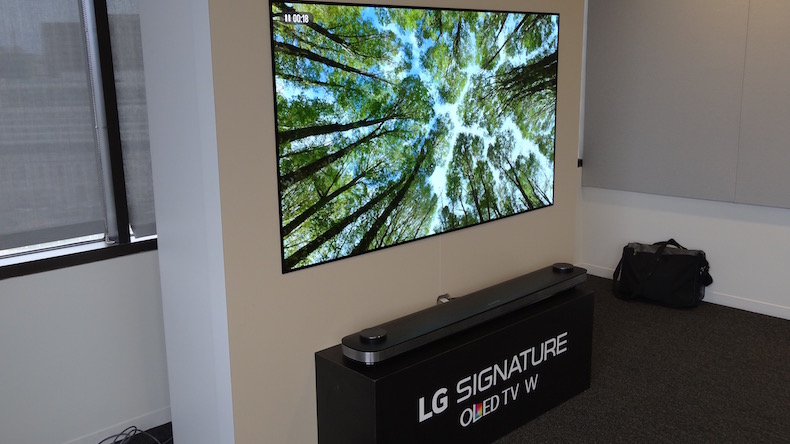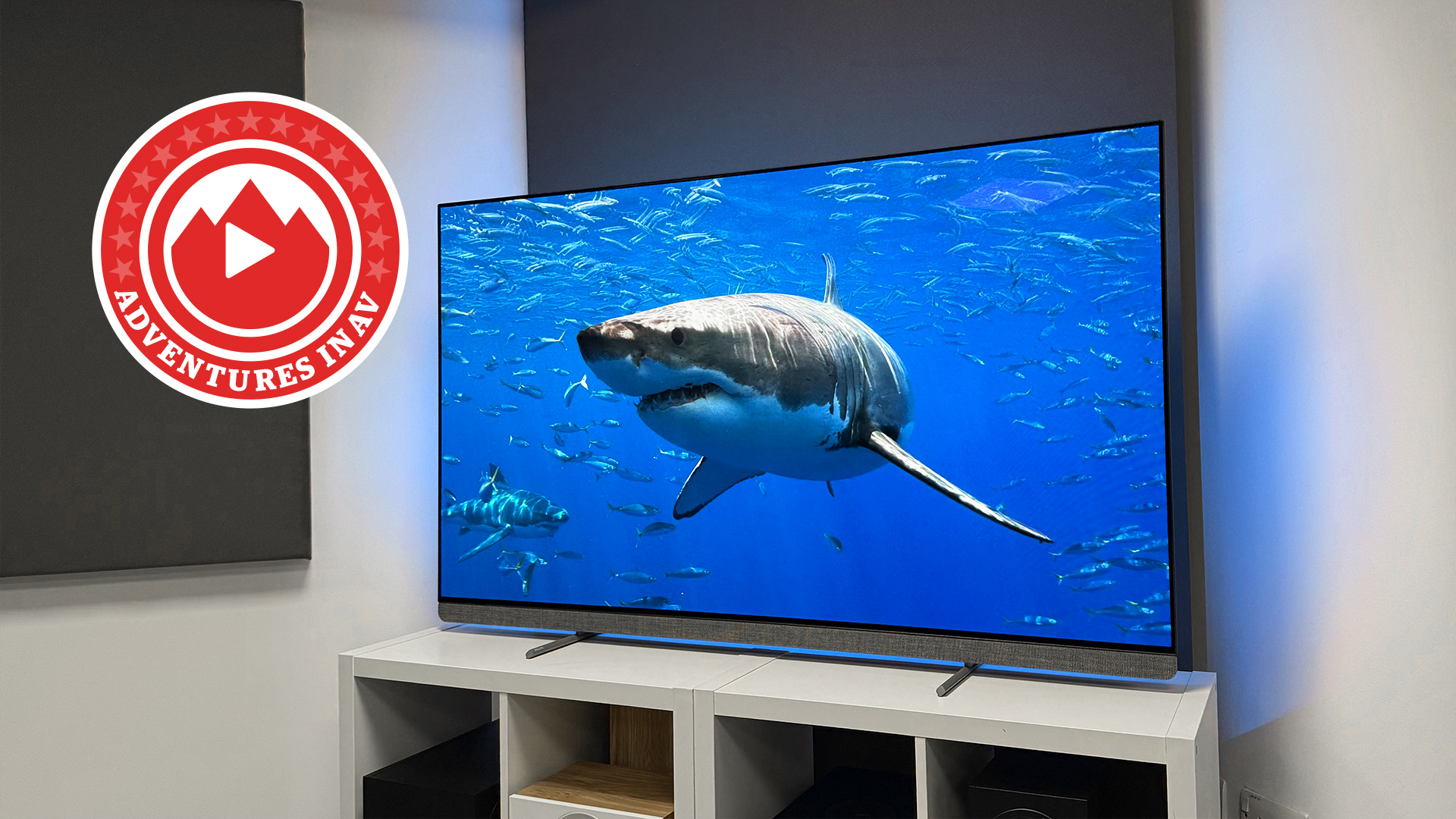The LG M3 ‘wireless’ OLED is very cool, but a W3 without speakers is my dream TV
Please, LG, bring back the ‘Wallpaper’ OLED TV

There’s been a lot of buzz around LG’s new M3 OLED TV since it was announced at this year’s CES. And rightly so, as it’s a really clever bit of kit – a two-part television that involves a transmitter box that sends all video and sound signals to the screen wirelessly, and right up to 4K resolution and a 120Hz refresh rate. Crikey, that’s impressive. Our very own Becky Roberts has seen the new TV in action, too, and describes the picture quality as “gorgeous” in her LG M3 hands-on.
And yet, as impressive and downright cool as the M3 undeniably is, it’s not the TV for me.
I would, in fact, argue that the LG M3 isn’t really a TV for modern homes either, seeing as so many people rely entirely on a TV’s built-in streaming apps and no longer use any external sources at all. But that’s another story, because I still have external sources galore.
No, my personal problem with the M3 has nothing to do with what it is. It’s all about what it isn’t, which is a W3 ‘Wallpaper’ TV. AKA, my dream television.

For those not already aware of LG’s W range of TVs, prepare to have your mind blown. First introduced in 2017 as the W7, the ‘Wallpaper’ TVs were so called because they had a screen section just 2.57mm thick. It was flexible, too, and so light that it could be hung on the wall using magnets.
This ultra-slimness obviously meant that the display was just a display – all of the processing, connections and speakers were housed in a separate unit much akin to a soundbar, with the two components connected using a wide but flat and largely transparent cable.
It was, and I’m really not exaggerating, an astonishing product that blew my mind when I first saw it, particularly when a couple of LG engineers held it between them and flexed it like a Rolf Harris wobble board before more or less slapping it on the wall.
The latest hi-fi, home cinema and tech news, reviews, buying advice and deals, direct to your inbox.
It wasn’t even that expensive. At £7999 / $8000 (around AU$14,000) for the 65-inch model it was obviously a premium proposition, but a five-figure price tag wouldn’t have seemed outrageous for such an envelope-pushing TV, particularly as the 65-inch version of that year’s entry-level B7 and C7 OLEDs (these were basically the same TV back then) launched at £4999 / $4500 (around AU$7000).
LG eventually canned the W series in 2020, with the WX being the last in the line. My assumption is that there weren’t enough people willing to pay the extra money, but my issue was always with that soundbar section – if I’m going to spend all of that money on what is arguably the most spectacular television that money can buy, I want a sound system to match, and a soundbar simply isn’t going to cut it. And even if you could handle the idea of paying for a presumably price-increasing sound system that you didn’t want, you couldn’t easily hide the soundbar section away as it was massive.

In short, I was always pining for a version of the W OLED without speakers – that instead of a soundbar had a simple box for the processing hardware and connections, including an output for a AV receiver – but, alas, it wasn’t to be.
Over time, I got over it and the memory of LG’s Wallpaper models faded, but then the M3 was wheeled out onto the stage at CES 2023. Here was a two-component television with a streamlined screen section and a separate box for handling the connections. The problem with the M3, though, is that it’s not a Wallpaper model, largely because speakers are built into the screen section. Design-wise, it’s much like a G3, only with a separate box so that you don’t need any cables (other than power) running to the TV.
Wouldn’t it be better if LG used this concept to bring the W series back from the dead? I certainly think so. Combine the M3’s wireless transmitter with the W’s wafer-thin, light and flexible display and you’ve got something truly extraordinary. Produce it at the smaller sizes in which OLED TVs are now made and you'd have a TV that you could simply peel off the wall in one room of the house and slap onto another. The M3’s Zero Connect box apparently has a wireless range of 30m, so you could leave it and your sources in one place and only move the screen. One screen for the whole house? That sounds pretty neat to me.
I realise, of course, that a wafer-thin OLED couldn’t be up there with the very best-performing OLEDs available. There’d be no room for a heatsink, for starters, and I’m honestly not sure whether the Micro Lens Array technology of LG’s new G3 is thin or flexible enough for this sort of application. But the C-series models don’t have those features anyway and 2022’s C2 is still a brilliant TV.
Just imagine: a wafer-thin TV of C2 quality that just sticks to the wall with magnets and, thanks to the Zero Connect box, has no source cables running to it. Surely I’m not the only person who thinks that would be a dream TV.
Come on, LG, make it happen, won’t you? If you can figure out wireless power while you’re at it, that will be grand.
MORE:
Read the full LG M3 Wireless OLED TV hands-on review
Relive the past with our LG W7 review
Time to upgrade? Here's our LG G3 vs G2 comparison
Tom Parsons has been writing about TV, AV and hi-fi products (not to mention plenty of other 'gadgets' and even cars) for over 15 years. He began his career as What Hi-Fi?'s Staff Writer and is now the TV and AV Editor. In between, he worked as Reviews Editor and then Deputy Editor at Stuff, and over the years has had his work featured in publications such as T3, The Telegraph and Louder. He's also appeared on BBC News, BBC World Service, BBC Radio 4 and Sky Swipe. In his spare time Tom is a runner and gamer.

